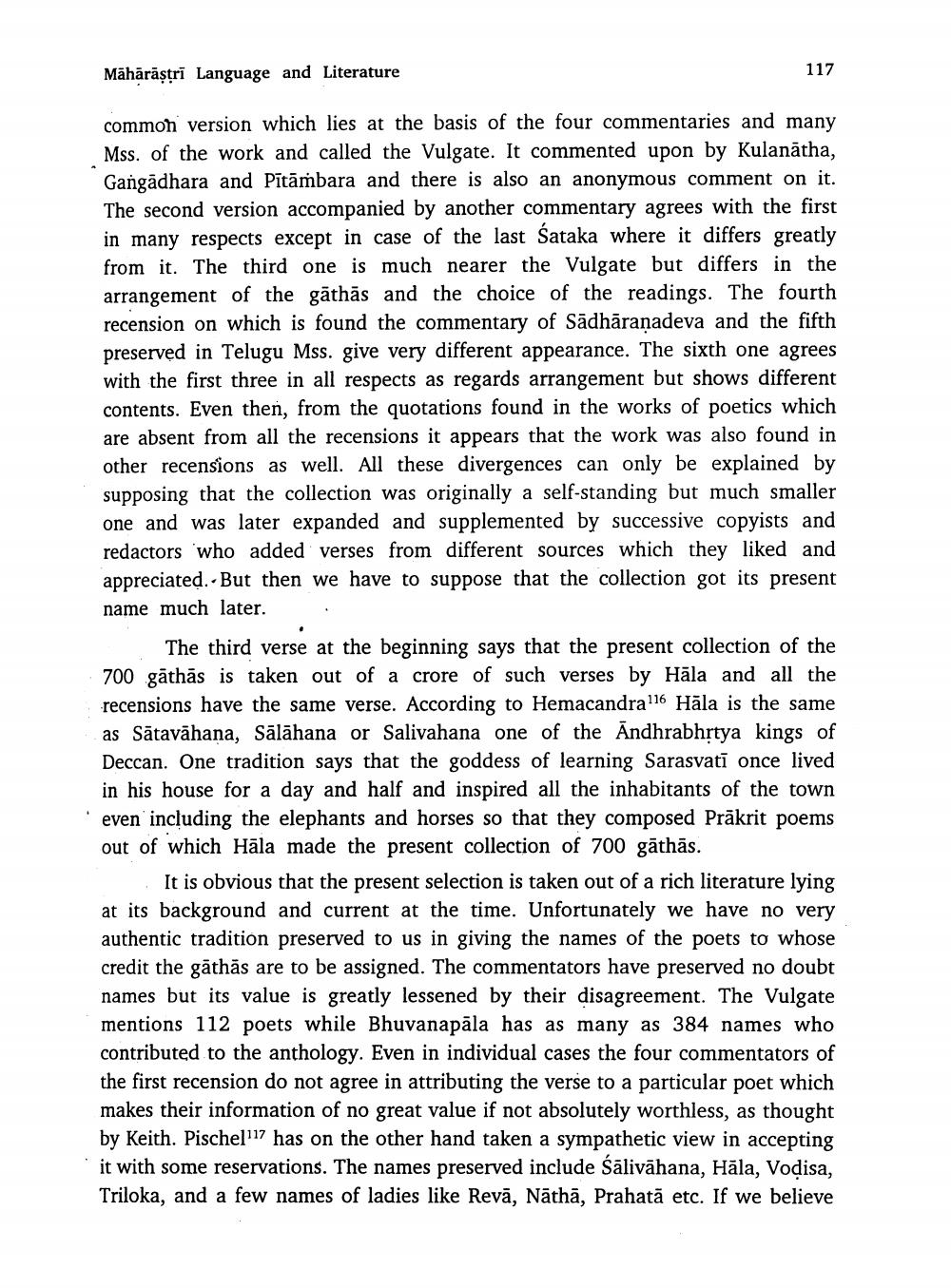________________
117
Mähäräştri Language and Literature
common version which lies at the basis of the four commentaries and many Mss. of the work and called the Vulgate. It commented upon by Kulanatha, Gangadhara and Pitambara and there is also an anonymous comment on it. The second version accompanied by another commentary agrees with the first in many respects except in case of the last Sataka where it differs greatly from it. The third one is much nearer the Vulgate but differs in the arrangement of the gathas and the choice of the readings. The fourth. recension on which is found the commentary of Sadharanadeva and the fifth preserved in Telugu Mss. give very different appearance. The sixth one agrees with the first three in all respects as regards arrangement but shows different contents. Even then, from the quotations found in the works of poetics which are absent from all the recensions it appears that the work was also found in other recensions as well. All these divergences can only be explained by supposing that the collection was originally a self-standing but much smaller one and was later expanded and supplemented by successive copyists and redactors who added verses from different sources which they liked and appreciated. But then we have to suppose that the collection got its present name much later.
The third verse at the beginning says that the present collection of the 700 gāthās is taken out of a crore of such verses by Hāla and all the recensions have the same verse. According to Hemacandra Hala is the same as Sātavāhana, Sälähana or Salivahana one of the Andhrabhṛtya kings of Deccan. One tradition says that the goddess of learning Sarasvati once lived in his house for a day and half and inspired all the inhabitants of the town even including the elephants and horses so that they composed Prakrit poems out of which Häla made the present collection of 700 gāthās.
It is obvious that the present selection is taken out of a rich literature lying at its background and current at the time. Unfortunately we have no very authentic tradition preserved to us in giving the names of the poets to whose credit the gathās are to be assigned. The commentators have preserved no doubt names but its value is greatly lessened by their disagreement. The Vulgate mentions 112 poets while Bhuvanapala has as many as 384 names who contributed to the anthology. Even in individual cases the four commentators of the first recension do not agree in attributing the verse to a particular poet which makes their information of no great value if not absolutely worthless, as thought by Keith. Pischel117 has on the other hand taken a sympathetic view in accepting it with some reservations. The names preserved include salivahana, Hāla, Vodisa, Triloka, and a few names of ladies like Revā, Nāthā, Prahată etc. If we believe




